Adidas, Converse and Nike are among those advancing cutting-edge circular shoes
Innovations include 3D printing, mushrooms and recycling options for consumers. Read More

-
Some models include non-virgin materials and modular designs.
-
Systems for collection, disassembly and reuse are also critical.
-
Circularity in footwear could set a precedent for other tough-to-recycle products, if scaled thoughtfully.
Each year, companies churn out about three pairs of shoes for each person on the planet. The textiles, rubbers, leathers, plastics and glues in those 24 billion pairs are mostly a waste: Brands fail to design for longevity, material reuse or recycling, so consumers dump some 300 million worn-out pairs in the trash each year.
Shoe production involves more than 200 processes and 60 components on average, contributing to .45 percent of the world’s climate footprint, according to the 2025 Footwear Carbon Report, released in May by the Footwear Innovation Foundation.
“Footwear is one of the most challenging products for a circular economy,” said Alexandra Sherlock, founder of the Footwear Research Network and a fashion lecturer at Royal Melbourne Institute of Technology. “Due to the complexity of construction, multiple materials, scale of production and the need for durability, footwear could be described as the hardest nut to crack. But if done successfully, it could lead the way for other product categories.”
Footwear makers’ numerous attempts at circularity have mostly focused on materials, such as Puma’s compostable Re:Suede kicks or Allbirds’ recent limited run of a “net zero carbon shoe.” (Soon I’ll mail back my year-old loaner pair of Asics Nimbus Mirai so they can be ripped apart and recycled.) But if On Running’s sneaker subscription service offers a rare circular business model, other industry players are amping up their efforts.
Nine circular samples
Some of the latest designs for circularity involve 3D printing, next-gen materials free of virgin fossil fuels and compostability. Here’s a sampling of styles, most available for purchase.
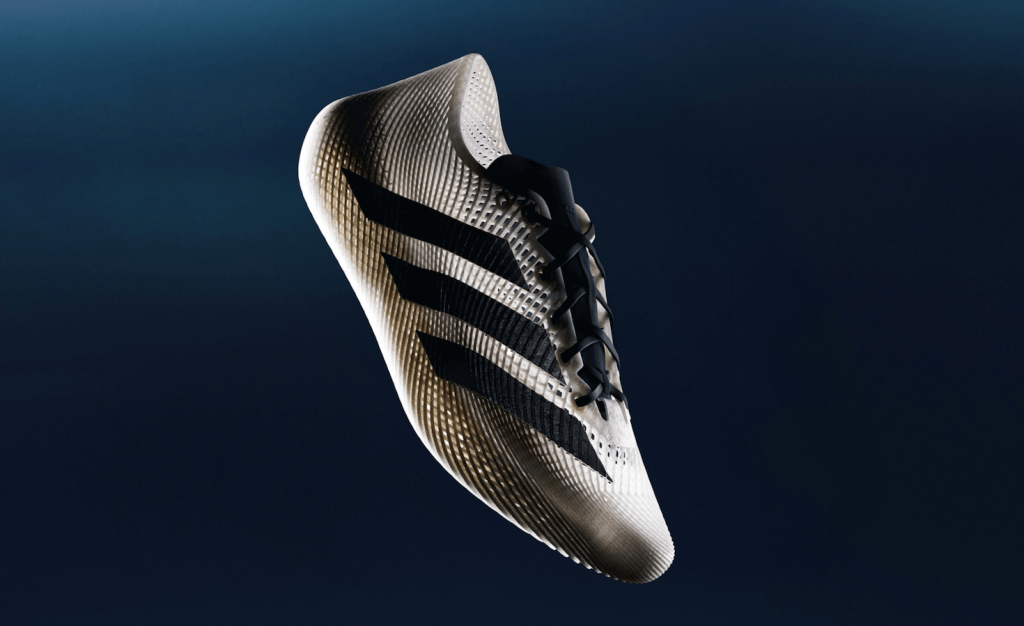
3D-printed Adidas ClimaCool slip-ons
Adidas’ ClimaCool sneakers have maximized mesh and vents since 2002. On May 2, the Bavarian brand globally released a 3D-printed version that takes breathability further with a lattice design that’s airy all sides, even the sole. The $140 laceless kicks are reminiscent of jellies from the 1980s, but instead of injection-molded polyvinyl chloride they use a single piece of polyurethane. Adidas collaborated with 3D printing startup Carbon of Redwood City, California on these. A lace-up version becomes available July 15.
In theory, 3D printing could make shoes sustainable, partly because the single material construction simplifies recycling. On-demand production would also cut industrial waste. Despite the innovation potential, however, Adidas does not advertise a takeback program or recycling options for the fossil fuel-based shoes.
The small Brooklyn brand Zellerfeld, by contrast, makes takeback a centerpiece for its $149-and-up 3D-printed footwear. Zellerfeld also collaborated with Nike on its AirMax 1000 3D-printed concept, shown off in November.
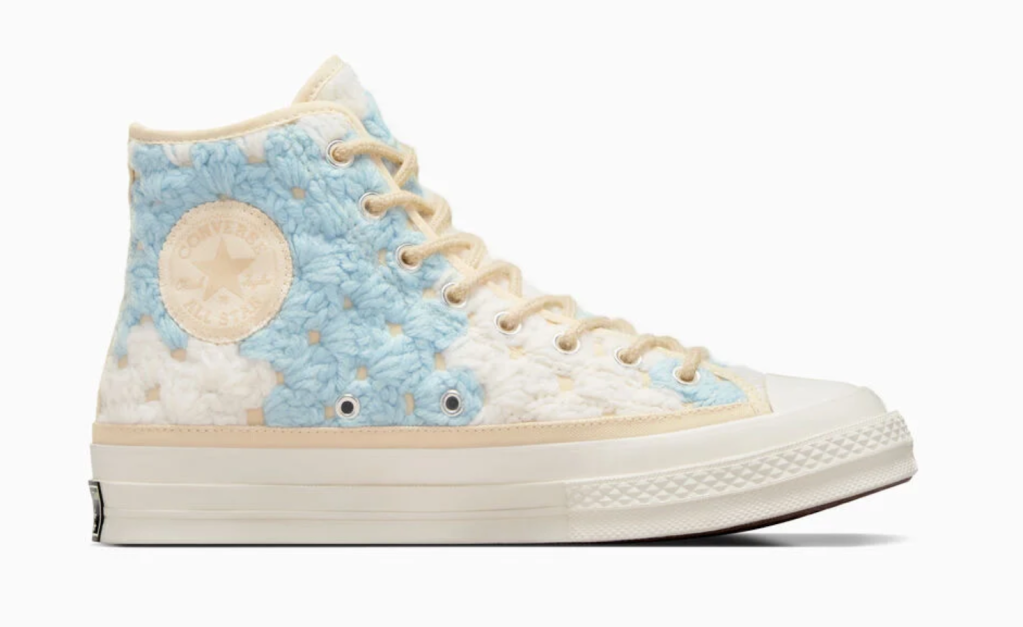
Crocheted Converse Chuck Taylors
Each pair of these $120 high-tops ships in surprise color combinations. These crochet-centric shoes returned to market in the past year after an initial debut in 2019. Upcycled crochet blankets comprise the upper part of the high-tops, but Nike’s Converse doesn’t specify if the material is secondhand, overstock or custom-made.
Beyond the vintage vibe, the rest of the shoe reflects typical construction: polyurethane foam lining, standard rubber vulcanized sole and metal eyelets that don’t break apart easily for recycling.
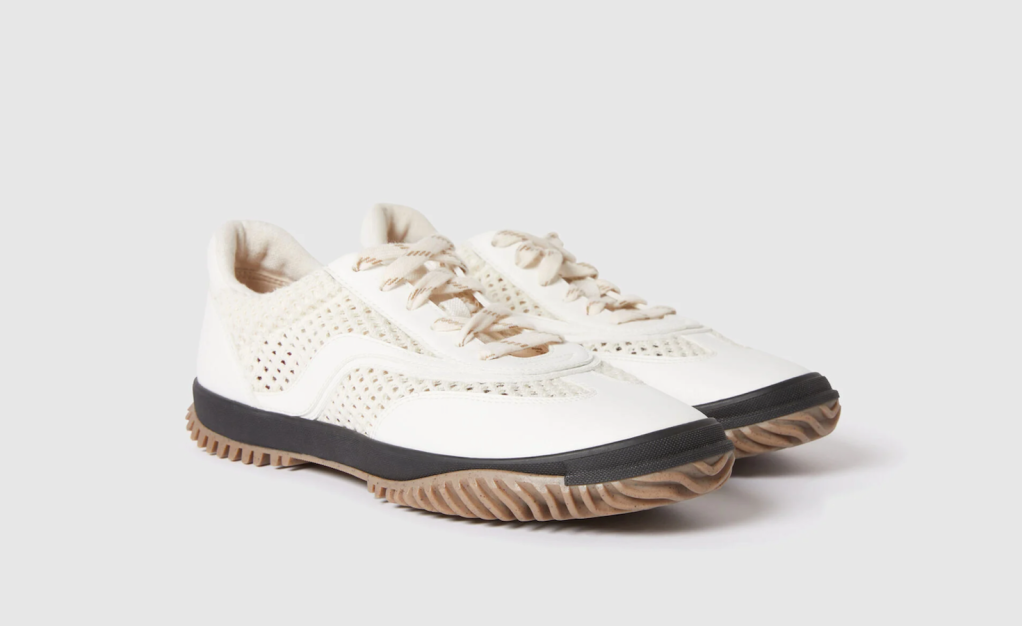
Cinnamon-sole Stella McCartney S-Wave Sport sneakers
A cinnamon scent wafts from the soles of these $780 shoes, which use waste from the spice tree. British designer Stella McCartney advertises “our most sustainable sneakers ever.” The Piñayarn uppers come from unused pineapple leaves. Israeli startup Balena crafted the “biobased, compostable” sole from its BioCir material, which includes castor oil.
However, an industrial composting facility is required for end-of-use circularity. The recycled polyamide and polyester in the lining and outer upper parts of the sneaker would presumably need to be removed before composting.
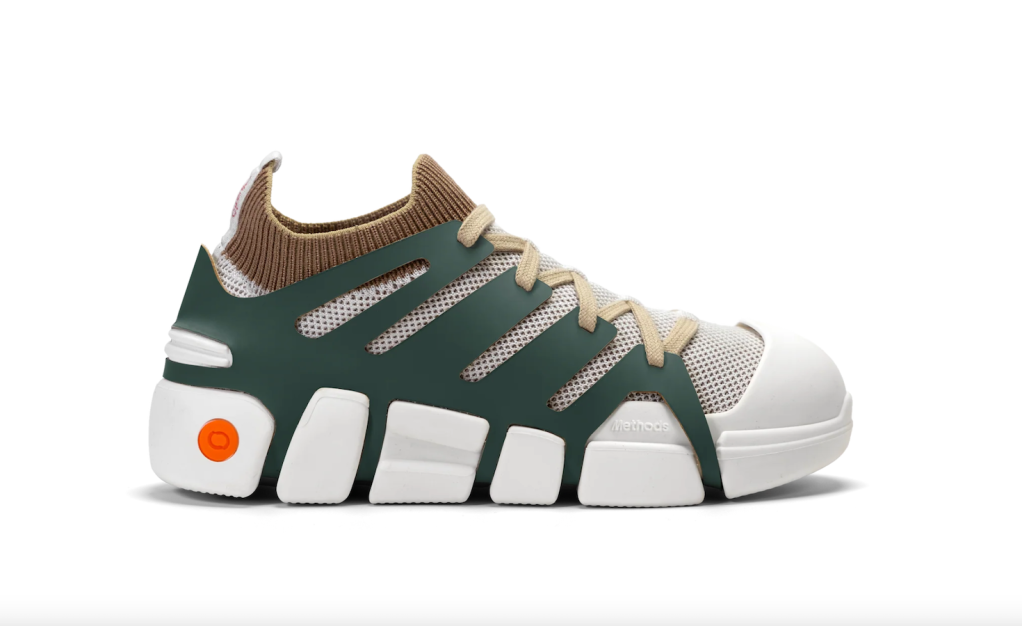
Methods modular shoe
If one part of this shoe tears or a color feels stale, just swap out old parts for new ones. Methods’ modular design features five components: recyclable thermoplastic rubber sole, cork and upcycled shoe waste insole, biodegradable Tencel upper, vegetable-tanned leather wrap and cotton laces. Choose from either a sand or pine-colored shell to contrast a flame or clay accent. The $252 sneakers are made in Portugal.
However, the company doesn’t share on its website how to take these apart and extend their use.
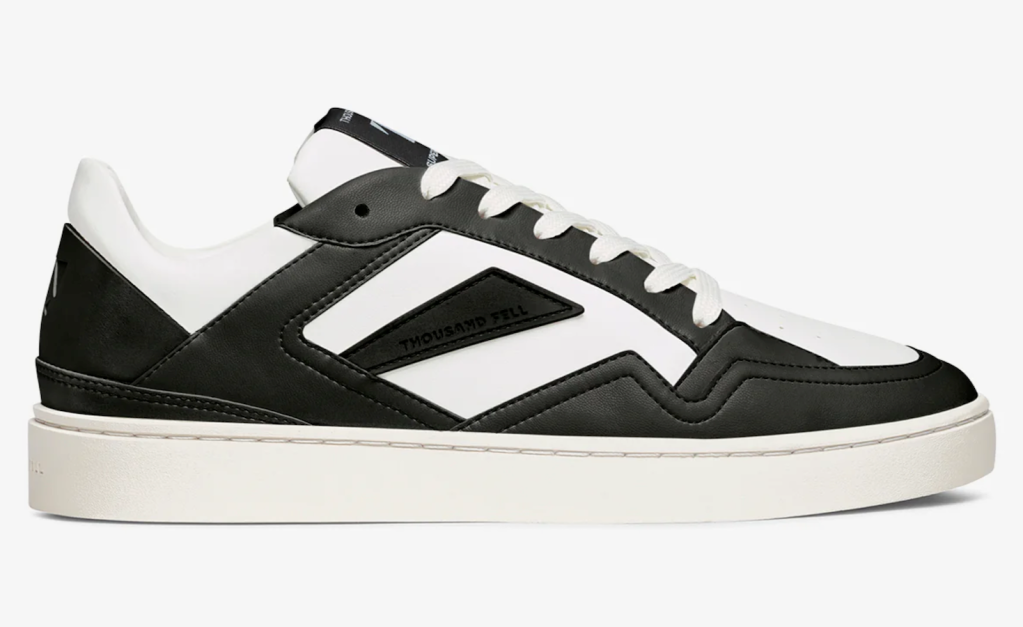
Thousand Fell
These $159 recycled and recyclable sneakers have been around since 2019. They’re made in Brazil with both a recycled polyethylene terephthalate (PET) plastic and rubber insole. Other parts feature coconut, sugar cane and palm, while aloe vera coats the mesh liner. What’s new as of the end of 2024 is a retail drop-off recycling option. Customers can mail back old pairs to UPS stores using prepaid labels in exchange for a 20 percent credit. TerraCycle and SuperCircle handle the processing and logistics.
The fibers, foams, rubber and other materials are mostly downcycled into insulation or flooring, but the companies are investing in their aspiration to enable sneaker-to-sneaker recycling.
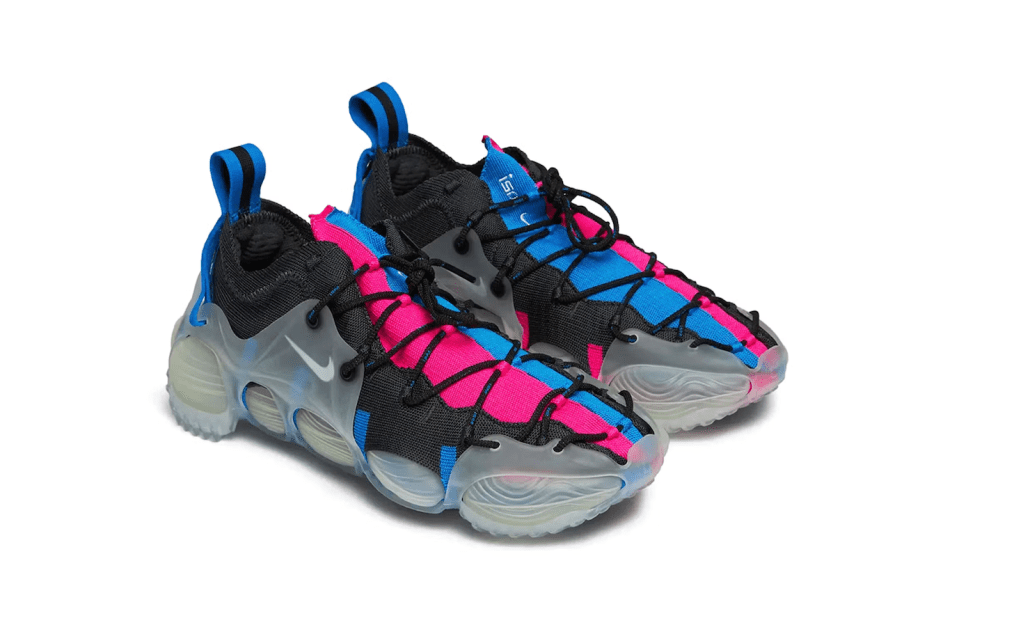
Nike ISPA Link Axis
Thousand Fell isn’t the only company seeking to streamline recycling for consumers. Since the early 1990s, the Nike Grind program has downcycled pairs it collects from its Reuse-a-shoe program. The sneaker leader’s latest circularity-centric designs are its glue-free ISPA Link Axis. The $300 pair was re-introduced in April 2024 after an initial drop in 2022. With Gap veteran Alice Hartley newly leading circularity at Nike, there’s likely to be more to come.
The four components of the ISPA Link Axis — outsole, midsole, upper and the “link system” holding the shoe together without glue — are built for ease of disassembly. Everything is recycled already, including Flyknit material on the outsole from recycled polyester and a thermoplastic polyurethane midsole deriving from recycled airbags. That said, the shoe is petroleum-centric.
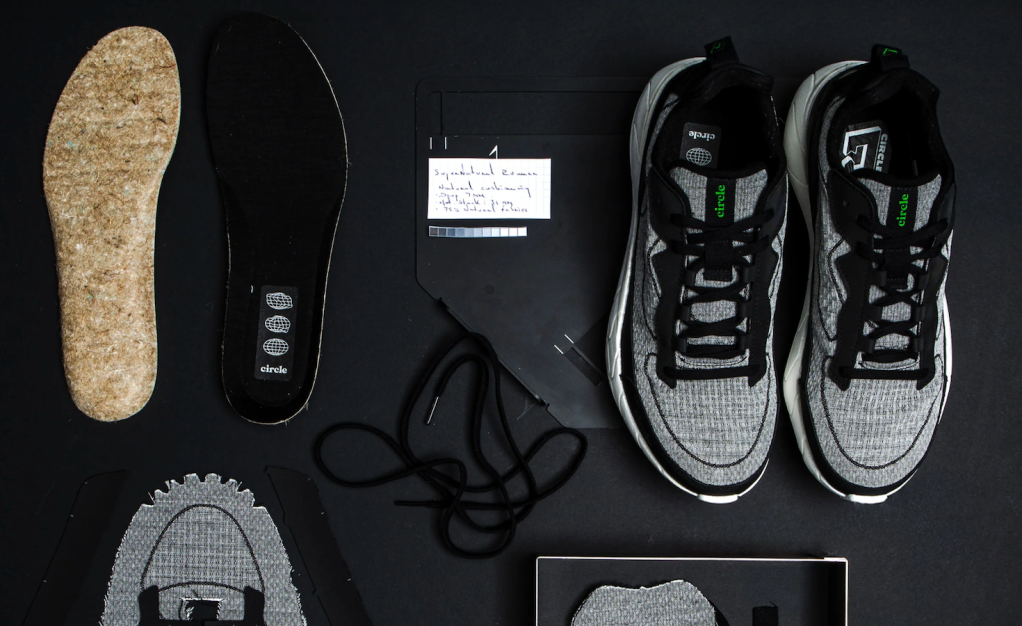
Circle Sportswear’s SuperNatural Runner
The Supernatural Runner has the highest level yet of biobased content in a commercial running shoe. Seventy-five percent of the shoe uses non-petroleum materials. The sneaker becomes available to European shoppers Aug. 1 for 175 euros ($202.34). Circle Sportswear designed an outsole with 70 percent biobased rubber and a midsole with 45 percent castor bean-based PLNT FOAM. The upper part of the shoe blends wool with lyocell. Natural materials feature in the finer points of the shoe, too, including organic cotton laces and eyelets made of Mirum, a rubber-and-plant-oil leather alternative. Circle Sportswear kept manufacturing in Europe. The Paris-based B Corporation encourages consumers to return their spent shoes in their original box. The brand plans to take them apart for recycling into “new high-performance polymer components.”
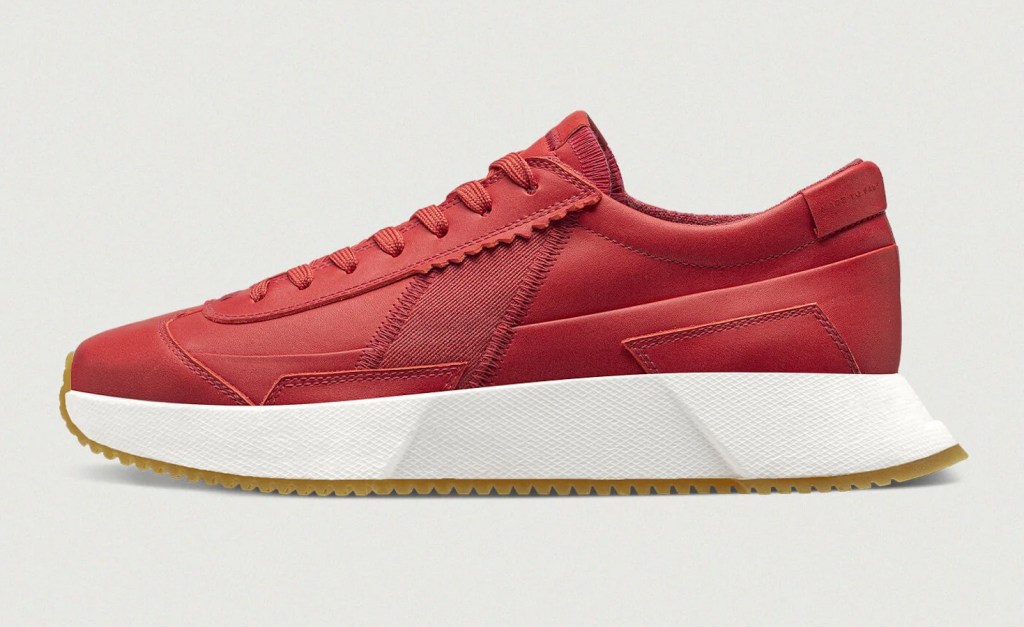
Solk ‘made to fade’ shoe
Out of Zug, Switzerland, comes a sneaker designed to degrade into compost. Other companies have claimed to create compostable products but have failed to provide an adequate takeback program for customers. That’s not the case here, according to co-founder David Solk, a former Adidas leader. “Between Gerty (our grinding machine) and ‘The Rocket’ (our composting machine) and Uncle Norbert (actually our Uncle Norbert), we are ready to turn worn-out SOLKs into nutrient-rich compost,” he wrote July 28 on LinkedIn. The Fade 101 designs include leather without chrome, laces from wood pulp and a rubber outsole. They start to ship in October for 248 euros ($286.74).
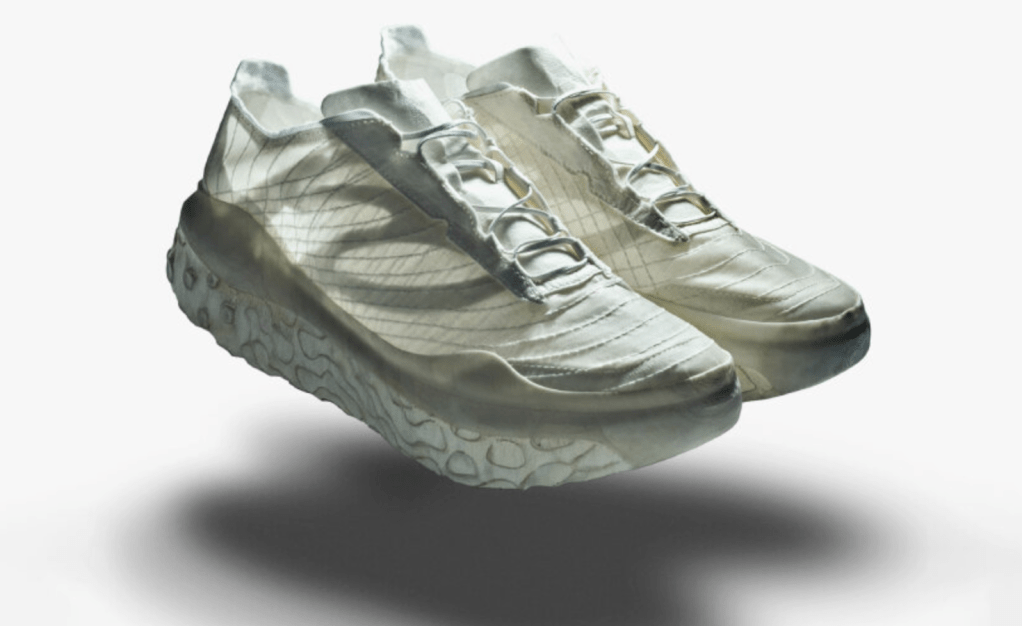
Concept Korvaa Shoe
Nobody can buy these concept sneakers, which debuted at the Future Fashion Expo in June in London. Yet the Korvaa Shoe marries several innovations, including 3D printing and fermentation. Three companies collaborated on it: Mushroom-packaging veteran Ecovative of New York grew the mycelium sole in a week. Through microbial fermentation, Modern Synthesis of London created the bacterial nanocellulose upper. And Transfoam’s Ourobio of Seattle used bio-based polyhydroxyalkanoate (PHA) polyesters for the midsole and structural scaffold.
How easily the shoes can be recycled, if they do materialize on the market, is another matter.
What’s next
“If you’re working in this space, start educating yourself on circular design and advocating for less materials, more recyclable materials and the ability to take shoes apart more easily,” said Cynthia Power, a fashion consultant and co-host of the Untangling Circularity podcast.
Aside from individual companies’ innovations, 14 brands including Brooks and Crocs have joined with the Footwear Collective to move such innovations forward. The group, which emerged in February, met in June to advance non-competitive collaboration in the industry.
“A circular system around shoes is more important than the design of the shoes themselves,” said Yuly Fuentes-Medel, founder and executive director of the Footwear Collective. “Designers need the right kitchen, recipe and ingredients in order to build circular products that can create new revenue loops. Build a durable shoe, and the product can live many lives. Build a shorter-use shoe with the right recipe, and we can bring the materials back into the footwear supply chain.”
















